Timeless icons: the Marenco sofa by arflex
Designed by Mario Marenco, this masterpiece of Italian design has set the standard for over fifty years.
- Sponsored content
This article will be published in Domus 1083, on newsstands in October 2023.
Where does Italy end? Certainly at Muggia in the Northeast, a town that concludes and redeems the discordant notes of Trieste. The latter is one of Italy’s lesser-known “capitals”, which at summer’s end reveals choices that no interpretation can make sense of. Nestled between Trieste and Muggia is the notable village of Aquilinia, designed under Fascism for the families of workers at the sprawling Aquila refinery, which from 1937 to the mid-1980s was a pillar of the Venezia Giulia region’s economy. From there it’s a short hop to Muggia, where the enthusiasm of youngsters, laughing as only young people can, transforms a concrete jetty into the Mediterranean’s most beautiful beach.
The way they dive, shove and hug each other seems so distant from Pier Paolo Pasolini’s seafronts. And what a contrast with the metallic stillness of the cranes in Trieste’s port and Piazza Unità d’Italia, which form the backdrop to the adolescence across the gulf. Yet they are part of the same national, urban and social history that stretches from South Italy to this border with Slovenia. A history not so much about the loss of peasant innocence as described by Pasolini, or the advent of the postmodern economy decried by the dockworkers’ union, but the emptying of meaning with the practice of urban morphing.
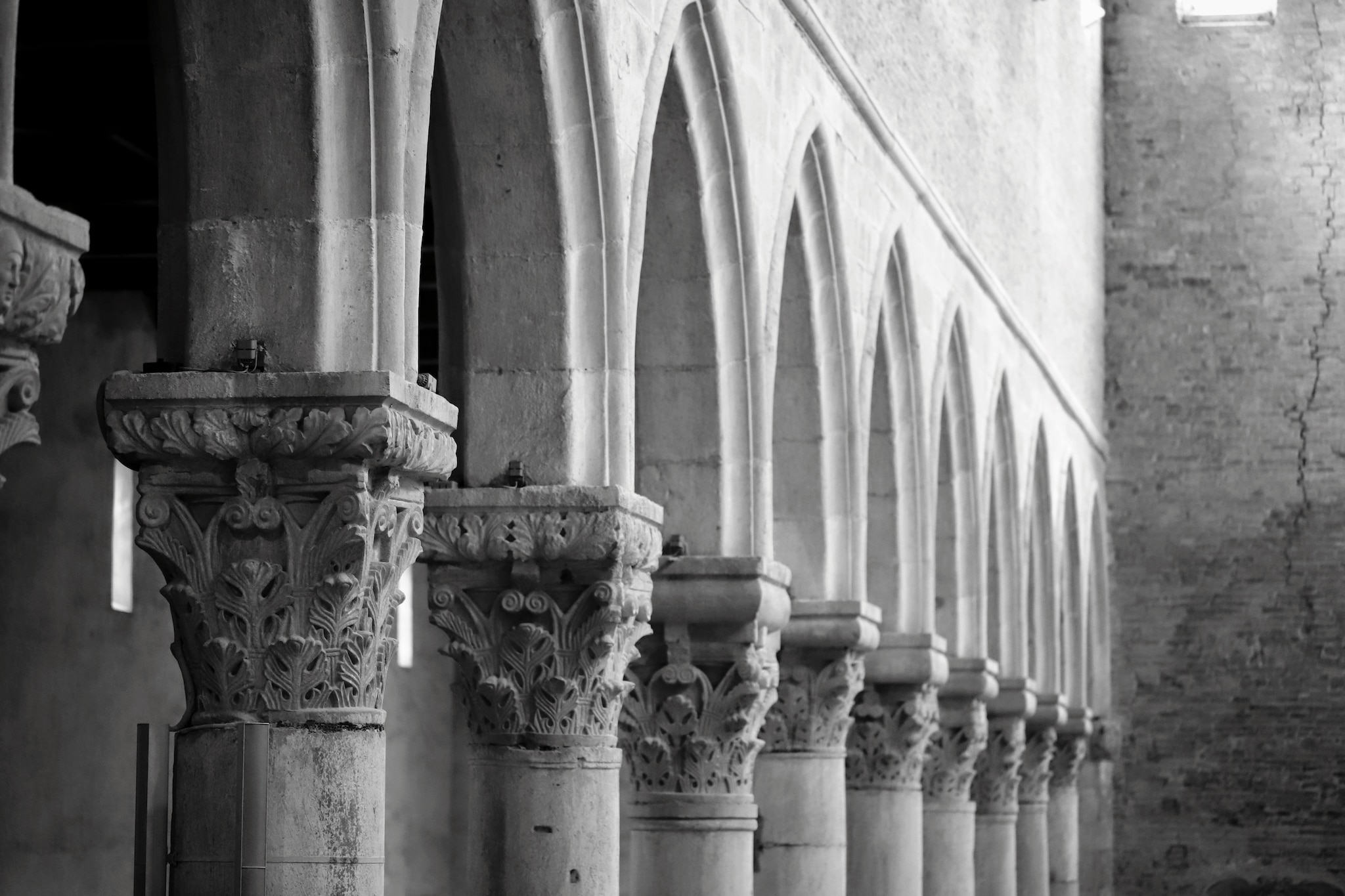
 View gallery
View gallery
.jpeg.foto.rmedium.png)
A four-stage portrait of the far Northeast: Trieste, Muggia, Casarsa della Delizia and Aquileia
Photo Valentina Petrucci
.jpeg.foto.rmedium.png)
A four-stage portrait of the far Northeast: Trieste, Muggia, Casarsa della Delizia and Aquileia
Photo Valentina Petrucci
.jpeg.foto.rmedium.png)
A four-stage portrait of the far Northeast: Trieste, Muggia, Casarsa della Delizia and Aquileia
Photo Valentina Petrucci
.jpg.foto.rmedium.png)
A four-stage portrait of the far Northeast: Trieste, Muggia, Casarsa della Delizia and Aquileia
Photo Valentina Petrucci
.jpeg.foto.rmedium.png)
A four-stage portrait of the far Northeast: Trieste, Muggia, Casarsa della Delizia and Aquileia
Photo Valentina Petrucci
.jpeg.foto.rmedium.png)
A four-stage portrait of the far Northeast: Trieste, Muggia, Casarsa della Delizia and Aquileia
Photo Valentina Petrucci
.jpeg.foto.rmedium.png)
A four-stage portrait of the far Northeast: Trieste, Muggia, Casarsa della Delizia and Aquileia
Photo Valentina Petrucci
.jpeg.foto.rmedium.png)
A four-stage portrait of the far Northeast: Trieste, Muggia, Casarsa della Delizia and Aquileia
Photo Valentina Petrucci
.jpeg.foto.rmedium.png)
A four-stage portrait of the far Northeast: Trieste, Muggia, Casarsa della Delizia and Aquileia
Photo Valentina Petrucci
.jpeg.foto.rmedium.png)
A four-stage portrait of the far Northeast: Trieste, Muggia, Casarsa della Delizia and Aquileia
Photo Valentina Petrucci
.jpeg.foto.rmedium.png)
A four-stage portrait of the far Northeast: Trieste, Muggia, Casarsa della Delizia and Aquileia
Photo Valentina Petrucci
.jpeg.foto.rmedium.png)
A four-stage portrait of the far Northeast: Trieste, Muggia, Casarsa della Delizia and Aquileia
Photo Valentina Petrucci
.jpeg.foto.rmedium.png)
A four-stage portrait of the far Northeast: Trieste, Muggia, Casarsa della Delizia and Aquileia
Photo Valentina Petrucci
.jpeg.foto.rmedium.png)
A four-stage portrait of the far Northeast: Trieste, Muggia, Casarsa della Delizia and Aquileia
Photo Valentina Petrucci
.jpeg.foto.rmedium.png)
A four-stage portrait of the far Northeast: Trieste, Muggia, Casarsa della Delizia and Aquileia
Photo Valentina Petrucci
.jpeg.foto.rmedium.png)
A four-stage portrait of the far Northeast: Trieste, Muggia, Casarsa della Delizia and Aquileia
Photo Valentina Petrucci
.jpeg.foto.rmedium.png)
A four-stage portrait of the far Northeast: Trieste, Muggia, Casarsa della Delizia and Aquileia
Photo Valentina Petrucci
.jpeg.foto.rmedium.png)
A four-stage portrait of the far Northeast: Trieste, Muggia, Casarsa della Delizia and Aquileia
Photo Valentina Petrucci
.jpeg.foto.rmedium.png)
A four-stage portrait of the far Northeast: Trieste, Muggia, Casarsa della Delizia and Aquileia
Photo Valentina Petrucci
.jpeg.foto.rmedium.png)
A four-stage portrait of the far Northeast: Trieste, Muggia, Casarsa della Delizia and Aquileia
Photo Valentina Petrucci
.jpeg.foto.rmedium.png)
A four-stage portrait of the far Northeast: Trieste, Muggia, Casarsa della Delizia and Aquileia
Photo Valentina Petrucci
.jpeg.foto.rmedium.png)
A four-stage portrait of the far Northeast: Trieste, Muggia, Casarsa della Delizia and Aquileia
Photo Valentina Petrucci
.jpeg.foto.rmedium.png)
A four-stage portrait of the far Northeast: Trieste, Muggia, Casarsa della Delizia and Aquileia
Photo Valentina Petrucci
.jpeg.foto.rmedium.png)
A four-stage portrait of the far Northeast: Trieste, Muggia, Casarsa della Delizia and Aquileia
Photo Valentina Petrucci
.jpeg.foto.rmedium.png)
A four-stage portrait of the far Northeast: Trieste, Muggia, Casarsa della Delizia and Aquileia
Photo Valentina Petrucci
.jpeg.foto.rmedium.png)
A four-stage portrait of the far Northeast: Trieste, Muggia, Casarsa della Delizia and Aquileia
Photo Valentina Petrucci
.jpg.foto.rmedium.png)
A four-stage portrait of the far Northeast: Trieste, Muggia, Casarsa della Delizia and Aquileia
Photo Valentina Petrucci
.jpeg.foto.rmedium.png)
A four-stage portrait of the far Northeast: Trieste, Muggia, Casarsa della Delizia and Aquileia
Photo Valentina Petrucci
.jpeg.foto.rmedium.png)
A four-stage portrait of the far Northeast: Trieste, Muggia, Casarsa della Delizia and Aquileia
Photo Valentina Petrucci
.jpeg.foto.rmedium.png)
A four-stage portrait of the far Northeast: Trieste, Muggia, Casarsa della Delizia and Aquileia
Photo Valentina Petrucci
.jpeg.foto.rmedium.png)
A four-stage portrait of the far Northeast: Trieste, Muggia, Casarsa della Delizia and Aquileia
Photo Valentina Petrucci
.jpeg.foto.rmedium.png)
A four-stage portrait of the far Northeast: Trieste, Muggia, Casarsa della Delizia and Aquileia
Photo Valentina Petrucci
.jpeg.foto.rmedium.png)
A four-stage portrait of the far Northeast: Trieste, Muggia, Casarsa della Delizia and Aquileia
Photo Valentina Petrucci
.jpeg.foto.rmedium.png)
A four-stage portrait of the far Northeast: Trieste, Muggia, Casarsa della Delizia and Aquileia
Photo Valentina Petrucci
.jpeg.foto.rmedium.png)
A four-stage portrait of the far Northeast: Trieste, Muggia, Casarsa della Delizia and Aquileia
Photo Valentina Petrucci
.jpeg.foto.rmedium.png)
A four-stage portrait of the far Northeast: Trieste, Muggia, Casarsa della Delizia and Aquileia
Photo Valentina Petrucci
.jpeg.foto.rmedium.png)
A four-stage portrait of the far Northeast: Trieste, Muggia, Casarsa della Delizia and Aquileia
Photo Valentina Petrucci
.jpeg.foto.rmedium.png)
A four-stage portrait of the far Northeast: Trieste, Muggia, Casarsa della Delizia and Aquileia
Photo Valentina Petrucci
.jpeg.foto.rmedium.png)
A four-stage portrait of the far Northeast: Trieste, Muggia, Casarsa della Delizia and Aquileia
Photo Valentina Petrucci
.jpeg.foto.rmedium.png)
A four-stage portrait of the far Northeast: Trieste, Muggia, Casarsa della Delizia and Aquileia
Photo Valentina Petrucci
.jpeg.foto.rmedium.png)
A four-stage portrait of the far Northeast: Trieste, Muggia, Casarsa della Delizia and Aquileia
Photo Valentina Petrucci
.jpeg.foto.rmedium.png)
A four-stage portrait of the far Northeast: Trieste, Muggia, Casarsa della Delizia and Aquileia
Photo Valentina Petrucci
.jpeg.foto.rmedium.png)
A four-stage portrait of the far Northeast: Trieste, Muggia, Casarsa della Delizia and Aquileia
Photo Valentina Petrucci
.jpeg.foto.rmedium.png)
A four-stage portrait of the far Northeast: Trieste, Muggia, Casarsa della Delizia and Aquileia
Photo Valentina Petrucci
.jpeg.foto.rmedium.png)
A four-stage portrait of the far Northeast: Trieste, Muggia, Casarsa della Delizia and Aquileia
Photo Valentina Petrucci
.jpeg.foto.rmedium.png)
A four-stage portrait of the far Northeast: Trieste, Muggia, Casarsa della Delizia and Aquileia
Photo Valentina Petrucci
.jpg.foto.rmedium.png)
A four-stage portrait of the far Northeast: Trieste, Muggia, Casarsa della Delizia and Aquileia
Photo Valentina Petrucci
.jpeg.foto.rmedium.png)
A four-stage portrait of the far Northeast: Trieste, Muggia, Casarsa della Delizia and Aquileia
Photo Valentina Petrucci
.jpeg.foto.rmedium.png)
A four-stage portrait of the far Northeast: Trieste, Muggia, Casarsa della Delizia and Aquileia
Photo Valentina Petrucci
.jpeg.foto.rmedium.png)
A four-stage portrait of the far Northeast: Trieste, Muggia, Casarsa della Delizia and Aquileia
Photo Valentina Petrucci
.jpeg.foto.rmedium.png)
A four-stage portrait of the far Northeast: Trieste, Muggia, Casarsa della Delizia and Aquileia
Photo Valentina Petrucci
.jpeg.foto.rmedium.png)
A four-stage portrait of the far Northeast: Trieste, Muggia, Casarsa della Delizia and Aquileia
Photo Valentina Petrucci
.jpeg.foto.rmedium.png)
A four-stage portrait of the far Northeast: Trieste, Muggia, Casarsa della Delizia and Aquileia
Photo Valentina Petrucci
.jpeg.foto.rmedium.png)
A four-stage portrait of the far Northeast: Trieste, Muggia, Casarsa della Delizia and Aquileia
Photo Valentina Petrucci
.jpeg.foto.rmedium.png)
A four-stage portrait of the far Northeast: Trieste, Muggia, Casarsa della Delizia and Aquileia
Photo Valentina Petrucci
.jpeg.foto.rmedium.png)
A four-stage portrait of the far Northeast: Trieste, Muggia, Casarsa della Delizia and Aquileia
Photo Valentina Petrucci
.jpeg.foto.rmedium.png)
A four-stage portrait of the far Northeast: Trieste, Muggia, Casarsa della Delizia and Aquileia
Photo Valentina Petrucci
.jpeg.foto.rmedium.png)
A four-stage portrait of the far Northeast: Trieste, Muggia, Casarsa della Delizia and Aquileia
Photo Valentina Petrucci
.jpeg.foto.rmedium.png)
A four-stage portrait of the far Northeast: Trieste, Muggia, Casarsa della Delizia and Aquileia
Photo Valentina Petrucci
.jpeg.foto.rmedium.png)
A four-stage portrait of the far Northeast: Trieste, Muggia, Casarsa della Delizia and Aquileia
Photo Valentina Petrucci
.jpeg.foto.rmedium.png)
A four-stage portrait of the far Northeast: Trieste, Muggia, Casarsa della Delizia and Aquileia
Photo Valentina Petrucci
.jpeg.foto.rmedium.png)
A four-stage portrait of the far Northeast: Trieste, Muggia, Casarsa della Delizia and Aquileia
Photo Valentina Petrucci
.jpeg.foto.rmedium.png)
A four-stage portrait of the far Northeast: Trieste, Muggia, Casarsa della Delizia and Aquileia
Photo Valentina Petrucci
.jpeg.foto.rmedium.png)
A four-stage portrait of the far Northeast: Trieste, Muggia, Casarsa della Delizia and Aquileia
Photo Valentina Petrucci
.jpeg.foto.rmedium.png)
A four-stage portrait of the far Northeast: Trieste, Muggia, Casarsa della Delizia and Aquileia
Photo Valentina Petrucci
.jpeg.foto.rmedium.png)
A four-stage portrait of the far Northeast: Trieste, Muggia, Casarsa della Delizia and Aquileia
Photo Valentina Petrucci
.jpeg.foto.rmedium.png)
A four-stage portrait of the far Northeast: Trieste, Muggia, Casarsa della Delizia and Aquileia
Photo Valentina Petrucci
.jpeg.foto.rmedium.png)
A four-stage portrait of the far Northeast: Trieste, Muggia, Casarsa della Delizia and Aquileia
Photo Valentina Petrucci
.jpeg.foto.rmedium.png)
A four-stage portrait of the far Northeast: Trieste, Muggia, Casarsa della Delizia and Aquileia
Photo Valentina Petrucci
.jpg.foto.rmedium.png)
A four-stage portrait of the far Northeast: Trieste, Muggia, Casarsa della Delizia and Aquileia
Photo Valentina Petrucci
.jpeg.foto.rmedium.png)
A four-stage portrait of the far Northeast: Trieste, Muggia, Casarsa della Delizia and Aquileia
Photo Valentina Petrucci
.jpeg.foto.rmedium.png)
A four-stage portrait of the far Northeast: Trieste, Muggia, Casarsa della Delizia and Aquileia
Photo Valentina Petrucci
.jpeg.foto.rmedium.png)
A four-stage portrait of the far Northeast: Trieste, Muggia, Casarsa della Delizia and Aquileia
Photo Valentina Petrucci
.jpeg.foto.rmedium.png)
A four-stage portrait of the far Northeast: Trieste, Muggia, Casarsa della Delizia and Aquileia
Photo Valentina Petrucci
.jpeg.foto.rmedium.png)
A four-stage portrait of the far Northeast: Trieste, Muggia, Casarsa della Delizia and Aquileia
Photo Valentina Petrucci
.jpeg.foto.rmedium.png)
A four-stage portrait of the far Northeast: Trieste, Muggia, Casarsa della Delizia and Aquileia
Photo Valentina Petrucci
.jpeg.foto.rmedium.png)
A four-stage portrait of the far Northeast: Trieste, Muggia, Casarsa della Delizia and Aquileia
Photo Valentina Petrucci
.jpeg.foto.rmedium.png)
A four-stage portrait of the far Northeast: Trieste, Muggia, Casarsa della Delizia and Aquileia
Photo Valentina Petrucci
.jpeg.foto.rmedium.png)
A four-stage portrait of the far Northeast: Trieste, Muggia, Casarsa della Delizia and Aquileia
Photo Valentina Petrucci
.jpeg.foto.rmedium.png)
A four-stage portrait of the far Northeast: Trieste, Muggia, Casarsa della Delizia and Aquileia
Photo Valentina Petrucci
.jpeg.foto.rmedium.png)
A four-stage portrait of the far Northeast: Trieste, Muggia, Casarsa della Delizia and Aquileia
Photo Valentina Petrucci
.jpeg.foto.rmedium.png)
A four-stage portrait of the far Northeast: Trieste, Muggia, Casarsa della Delizia and Aquileia
Photo Valentina Petrucci
.jpeg.foto.rmedium.png)
A four-stage portrait of the far Northeast: Trieste, Muggia, Casarsa della Delizia and Aquileia
Photo Valentina Petrucci
.jpeg.foto.rmedium.png)
A four-stage portrait of the far Northeast: Trieste, Muggia, Casarsa della Delizia and Aquileia
Photo Valentina Petrucci
.jpeg.foto.rmedium.png)
A four-stage portrait of the far Northeast: Trieste, Muggia, Casarsa della Delizia and Aquileia
Photo Valentina Petrucci
.jpeg.foto.rmedium.png)
A four-stage portrait of the far Northeast: Trieste, Muggia, Casarsa della Delizia and Aquileia
Photo Valentina Petrucci
As Count Carolus Cergoly intuited, in his unforgettable but largely forgotten novel Il complesso dell’imperatore (Mondadori, 1979). From this jetty a stone’s throw from Slovenia, you see where Italy ends and particularly why it ends like this. Both the port and Piazza Unità d’Italia were created by clearance projects that effaced social functions, metamorphosed semantics and above all emptied them of meaning.
After all, ever since the 18th century, Trieste has been voiding its meaning via a process of architectural obliteration by which the city – declared a free port in 1719 by the Habsburg Emperor Charles VI, Archduke of Austria and King of Hungary – became the heart of a political project to make Trieste the empire’s economic, financial and logistical capital. This choice was undoubtedly favoured by the bay’s deep waters, a rare attribute in the Upper Adriatic and perfect for large coastal trade ships. But the plan soon lapsed into political rhetoric supported by urban planning.
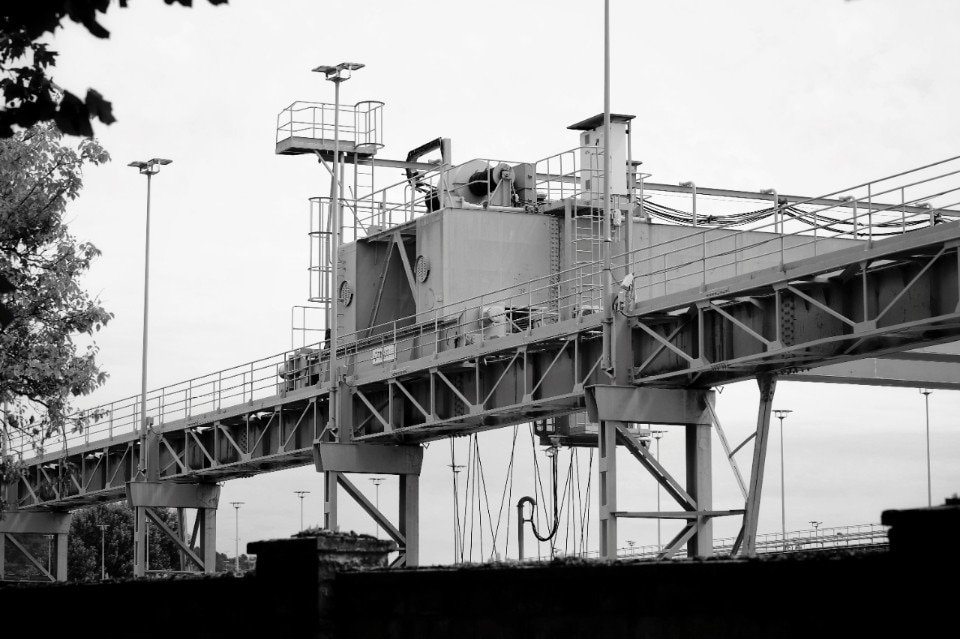
Starting from the first projects for Borgo Teresiano to the north and Borgo Giuseppino to the south, the plan proceeded by recasting the Audace pier, which no longer berthed ships in the 20th century. In this way, urban planning re-semanticised the emptying of the historic centre, lining up the great edifices of Assicurazioni Generali and Lloyd Adriatico, which soon lost their function as company headquarters to become theatrical urban backdrops, just as Sebastiano Serlio envisioned in the 16th century.
A self-referential, rhetorical and finally touristic urban mutation. It is staggering to observe the appearance of the city’s waterfront over the last century and a half. Except for the increase in cars and the disappearance of public rail transport, only the elimination of shipping stands out, with the docks moved so that Porto Vecchio and Canal Grande have become desertified. But without the forest of masts and sails visible from the sea, the city has become a panopticon that ideally rotates on the Audace pier. Embedded in the buildings but now devoid of function, it has turned into a grand photo opportunity for Piazza dell’Unità, the Teatro Verdi and the Greek-Orthodox Church of San Nicolò dei Servi.
And in the opposite direction, for the sanctuary of Monte Grisa, Miramare Castle and the Victory Lighthouse. Say “cheese”! From being a city of the sea and commerce, a strategic, identifying centre, a capital of empire, Trieste entered the 20th century as a metaplace for regattas and Sunday outings. All thanks to architecture, an aesthetic tourist dimension that produces nostalgia by uniting Trieste to Italy’s crisis-ridden fate. It’s a pity that architecture as an aesthetic doesn’t help the socio-economic and strategic redemption of one of Europe’s most important cities, which remains the gateway to the Balkans and Central Europe and the true hub between the Mediterranean/Eurasian regions.
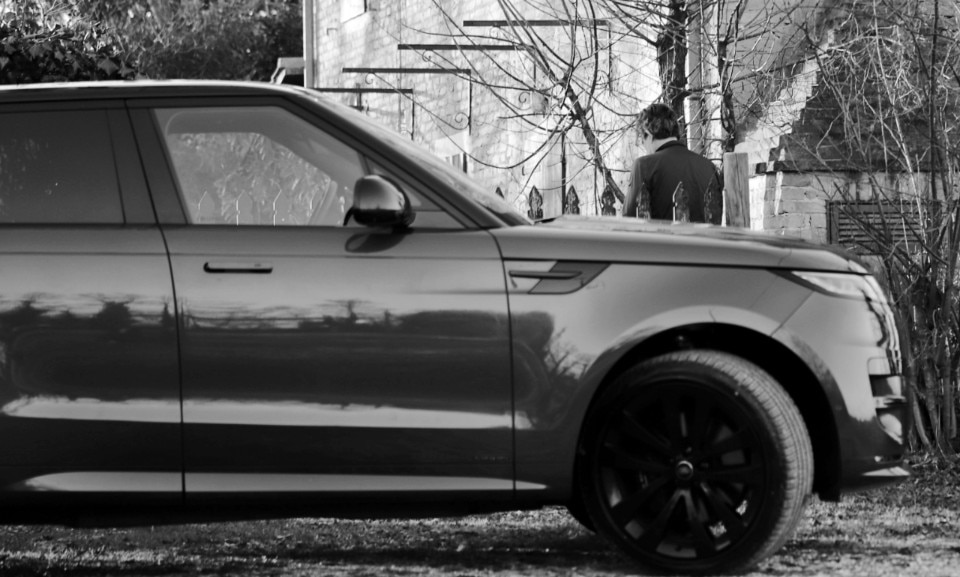
Heading home from the border, one comes across at least two towns that, like Trieste, have lost their functions, in one sense political and administrative and in another semantic and mythopoetic. Aquileia, one of the three capitals of the Roman Empire, is today essentially a refined and cultivated tourist destination. Developed around the patriarchal basilica, for a radius of about a kilometre, incorporating the remains of the ancient Roman city, it is encircled by reclaimed marshes intensively cultivated in the last millennium, behind the pine forest of Belvedere and San Marco.
Aquileia’s history is not to be found in the town today and even less in its tourist attractions, which counterposes conservative restorations with the marketisation of areas in front of the monuments. The same fate has overtaken the town of Casarsa della Delizia, a few kilometres further on. It was the home of Pasolini’s maternal grandfather, who played a large part in the writer’s development. Today, all that remains of Pasolini in Casarsa is the house converted into a secular provincial cenotaph behind the Fascist station and opposite a cafe specialising in mojitos, where young and old exchange videos.
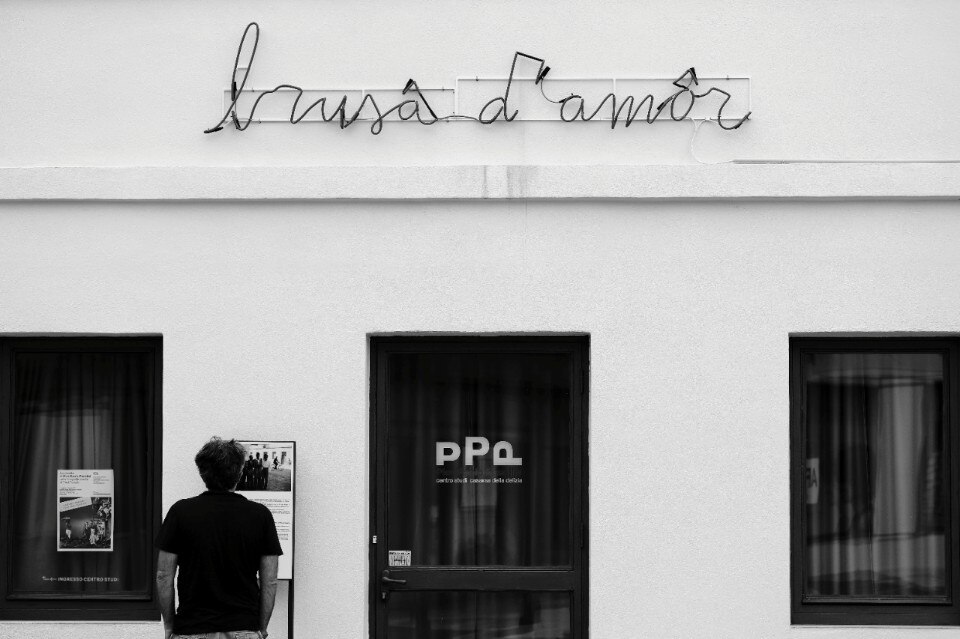
It’s the nemesis of the early Pasolini who wrote Poesie a Casarsa, published in 1942 and merged in 1954 with La meglio gioventù, which reveals his core poetic and defines his founding myth: the existence of an archaic, innocent, pure world that still feels and speaks with the sacred. Nothing remains of that world in Casarsa today, just as nothing remains of the empire in the car-park kiosks by Aquileia’s cathedral. Everything has changed. Everything has fallen into the Birkenstock sandals of German tourists and into the tattoos that are a parody of subversive youth in provincial towns. All forgotten except the peasant language that today, as in the pages of Pasolini, sounds like another communicative code, lost midway between childlike and hyper-literary. It’s a pity that this language no longer expresses individuals’ extreme escape from uniformity, only their definitive acceptance of a world based on negating the wellspring of adolescence, and the corrupting nature of adulthood, which has stripped away all the saving power of architecture and urban design.
.jpeg.foto.rmedium.jpg)
The feature Italian journey is created with the support of Jaguar Land Rover
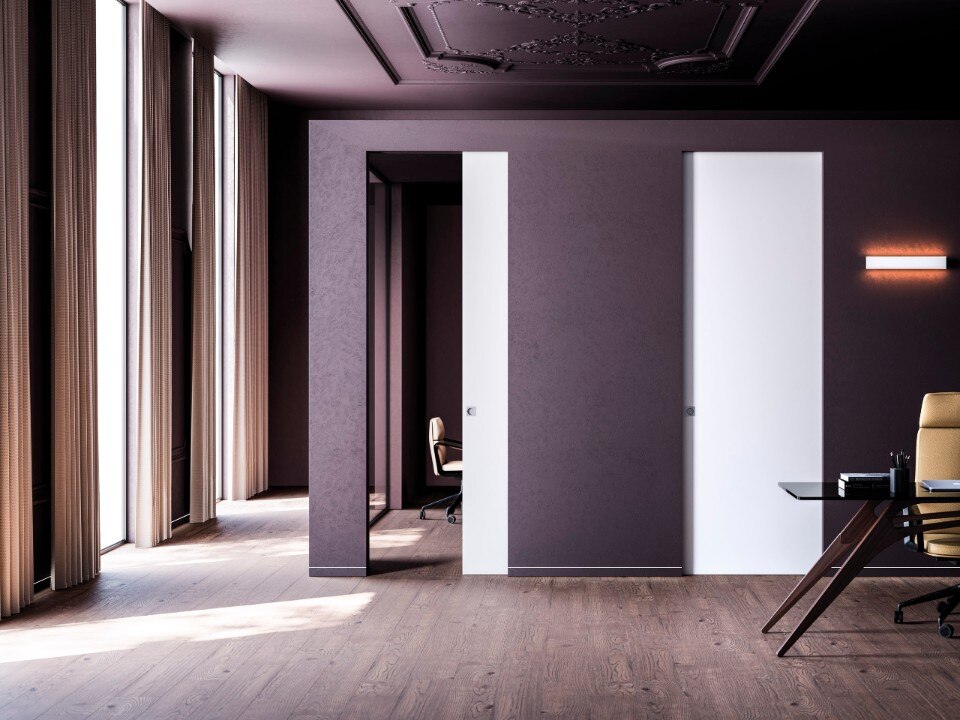
Eclisse: when invisibility art shakes up interior design
A leader in manufacturing pocket door frame systems, Eclisse redefines the concept of living space. Through solutions like Syntesis Line, the company transforms doors into continuous design elements.
- Sponsored content


.jpeg.foto.rmedium.png)